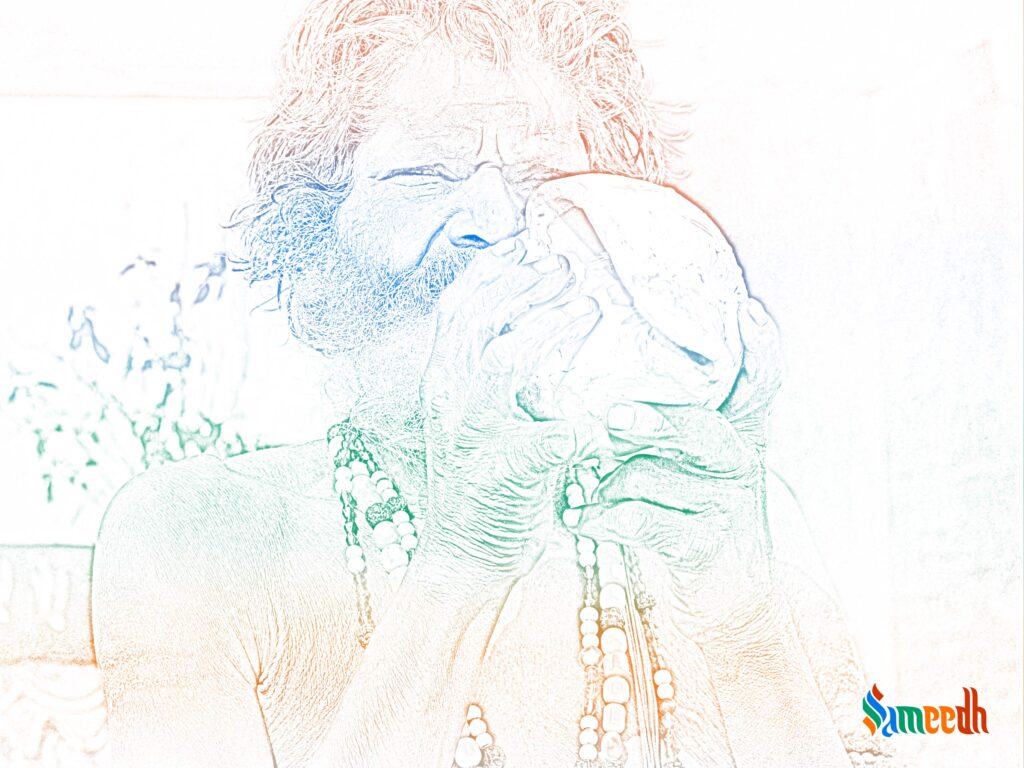Shankh or conch is a significant part of the Sanatan Dharma. The Shankh is believed to represent the astronomical movement of the sun, moon, planets, and stars across the sky and is thought to contain cosmic energy inside itself, which is released when it is blown.

In Hinduism, the conch’s sound is related with the divine mantra ‘Aum,’ which is regarded to be the primordial sound of creation. The beginning of every significant work is marked by the blowing of the Shankh or conch. The conch’s sound is regarded to be the purest of sounds, ushering in growth and joy.
Importance of Shankh in daily rituals
Every Hindu household keeps a ‘Shankh’ with special reverence because it is considered sacred. The shankh is recommended to be kept on a red cloth or in a silver or clay pot. In addition, people put water in the conch, which is sprayed during puja rites. The Shankh is thought to contain cosmic energy inside itself, which is released when it is blown. Shankh is a revered symbol of Bhagwan Vishnu, who is shown carrying it in one of his hands in several of his avatars. Shankh is the abode of Goddess Lakshmi and Bhagwan Vishnu, according to the Brahma Vaivarta Purana. During ritual cleaning, Shankh is also used to bathe idols or pictures of various deities. Cleansing Bhagwan Vishnu using shankh is thought to grant forgiveness for past life’ sins.
Health benefits and cleansing effects of Conch
Conch blowing can also improve overcome speech issues. Blowing conch helps prostate health by exerting pressure on the prostate tract. When you blow a conch, your cheek muscles are stretched, which significantly reduces fine lines and wrinkles. The diaphragm, chest, and neck muscles, as well as the urinary tract, bladder, and lower abdomen, benefit from blowing conch. The Shankh makes a buzzing sound like the ocean when you hold it. This buzzing vibration is actually the earth’s cosmic energy. The lung muscles expand when you blow the shankh, increasing your aerial capacity. When the earth’s cosmic energies enter the shankh, it is magnified.
These vibrations emit positive energy while removing harmful energies from the environment. The conch sound’s uplifting energy and vibrations make people more receptive. The conch waves have such a strong positive psychological effect, boosting emotions like as confidence, enthusiasm, optimism, and perseverance. The intense sound of the conch enables the conch blower to focus purely on that sound, cleansing the mind of all other thoughts and helping the individual to relax.
Types of Shankh
There are 7 types of conchs which are found all over the world.
1. Dakshinavarti Shankha
2. Ganesha Shankha
3. Vamavarti Shankha
4. Gaumukhi Shankha
5. Moti Shankha
6. Heera Shankha
7. Kauri Shankha
Ayurved and conch
The powdered conch shell is commonly used as an ayurvedic remedy for gastrointestinal disorders. The conch is soaked in lime juice and heated at extreme temperature in oxygen or air 10 or 12 times before being reduced to powder ash. The ash, known in Sanskrit as ‘shankh bhasma,’ includes iron, calcium, and magnesium, as well as digestive and antacid qualities.
Further classification of the conch
The conch is categorized into male and female kinds according to ancient Indian tradition. The male shankhis supposed to be the thicker-shelled inflated conch, while the female shankh is considered to be the thin-shelled narrow conch (shankhini). In addition, there are two types of conch shells seen in existence: those that turn left and those that turn right. Shells that twirl to the right in a clockwise motion are pretty uncommon and are treasured. Such Shankhs are believed to represent the astronomical movement of the sun, moon, planets, and stars across the sky.
